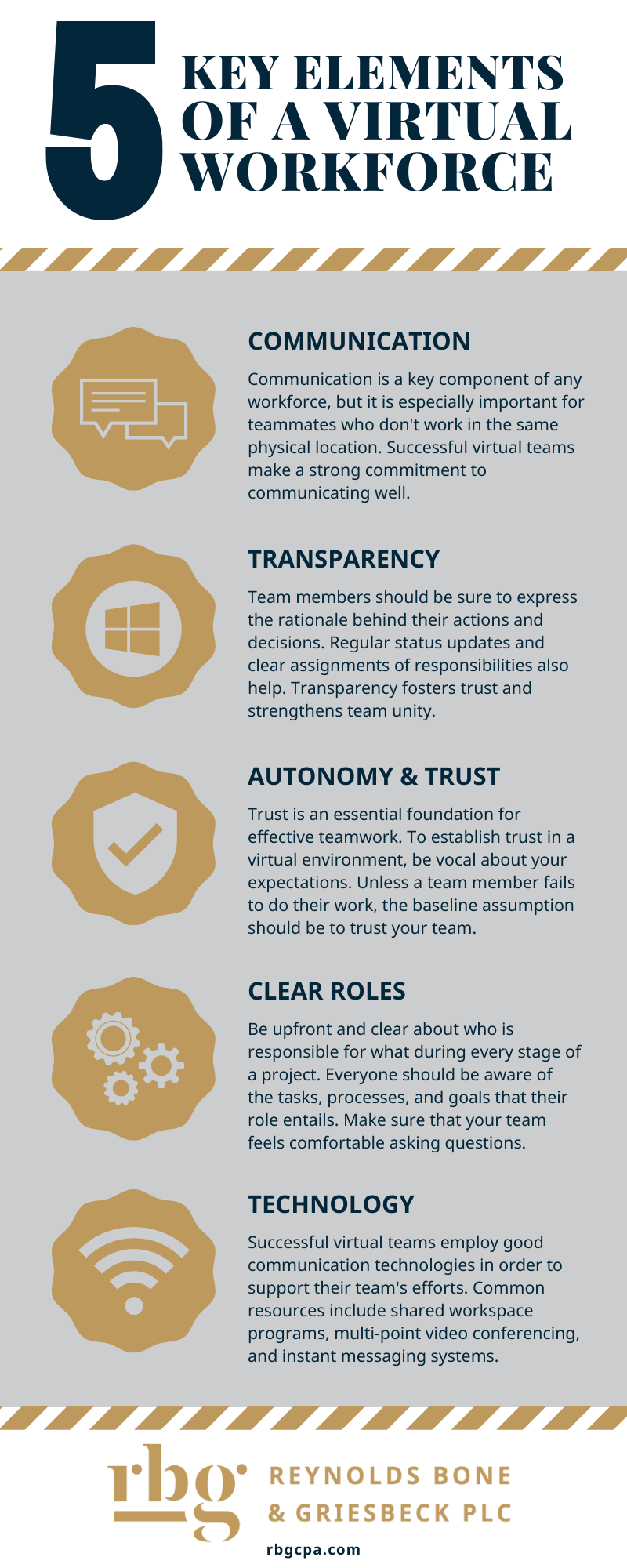Productivity Tips for a Virtual Environment
Working from home has become the new norm, at least while we all take extra precautions during this time. This is made possible by the advent of technologies that make working closely with people who are physically removed feasible. 
While there are many advantages to virtual workforces, this arrangement also comes with its own set of challenges and difficulties. Today we want to examine some helpful productivity tips for working from home, as well as take a look at the key elements of a successful virtual workforce. 
Productivity Tips for the Virtual Office 
For some, working from home comes easily; for others, it is a big challenge to remain focused and productive. Here are some tips for maintaining productivity in a virtual work environment: 
- Set your work hours. Start at the same time every day and work a set number of hours
- Set clear boundaries. If you have family or roommates in your home during the day, make sure they understand that during work hours, you are in the office and working. Ask them to do their best not to interrupt you while you’re working.
- Have a designated workspace. If you have a home office, or even just a desk, use it just for work. This helps to keep the boundaries between work and home life distinct
- Avoid blurring the lines between work life and home life. If you’re not careful it can feel like you’re always at work.
- Use music to help you stay focused. Find a style that doesn’t distract you. For most people, this is music without any words. Try classical music, or music from video games, which is designed specifically to keep listeners alert and focused, without being obstructive. 
Key Elements of a Successful Virtual Workforce 
1. Communication
It is no surprise that communication is number one on this list. Communication is a key component of any workforce, virtual or not. But it is especially important for people who don’t work in the same physical location. Knowing this, successful virtual teams make a strong commitment to communicating well. Their leaders make sure that the expectation is firm: when it comes to communicating, clarity and discipline are required. 
In addition to managing expectations when it comes to communication, many virtual teams schedule time for non-virtual meetings in order to create or strengthen an effective foundation for their teamwork. This can look like an in-person meeting at the inception of your virtual team, or it could be regularly scheduled get-togethers. If in-person meetings are simply not possible (maybe your team works internationally), then some sort of virtual team building might help bridge the gap. 
2. Transparency
To achieve success with a virtual workforce, transparency is also important. Team members, especially leaders, should be sure to express the rationale behind their actions and decisions. Regular status updates and clear assignments of responsibilities also help. This type of transparency fosters trust and strengthens team unity. 
3. Autonomy & Trust
Trust is difficult, but important. It is an essential foundation for effective teamwork. If the members of a virtual workforce don’t feel like their leaders trust them, the team will not function well. The best method for establishing trust within a remote team is to be vocal about the culture of trust you expect. The baseline assumption should be to trust your team: trust them to do their work and fulfill the requirements of their job. Unless a team member proves untrustworthy, they should be trusted. 
4. Clearly Defined Roles 
Clarity of roles from the outset can prevent a plethora of problems down the road. Be upfront and clear about who is responsible for what during every stage of a project. Everyone should be aware of the tasks, processes, and goals that their role entails. Make sure that your team feels comfortable asking questions in order to clarify their roles. 
On top of setting clear role expectations, successful virtual teams perform post-project reviews. These discussions don’t have to be long or involved, but they should take place. Together, colleagues can assess and discuss what went well, what went poorly, and what they should do differently in the future. 
5. Technology
Lastly, technology has a huge impact on the performance of virtual teams. Successful teams employ good communication technologies in order to support their team’s efforts. Common technologies include shared workspace programs, multi-point video conferencing, instant messaging systems, and more. There are a ton of options out there. Be sure to do thorough research to find the systems that will best serve your virtual team. 
Establishing and maintaining a successful virtual team is no easy matter, but it is a worthwhile endeavor. Be sure to perform regular self-evaluations to determine what is working and what is not. Don’t be afraid to switch things up if something isn’t working well. Ask for feedback from your team. If you stick to the key items enumerated above, a successful virtual workforce is well within your grasp. 


Add a Comment